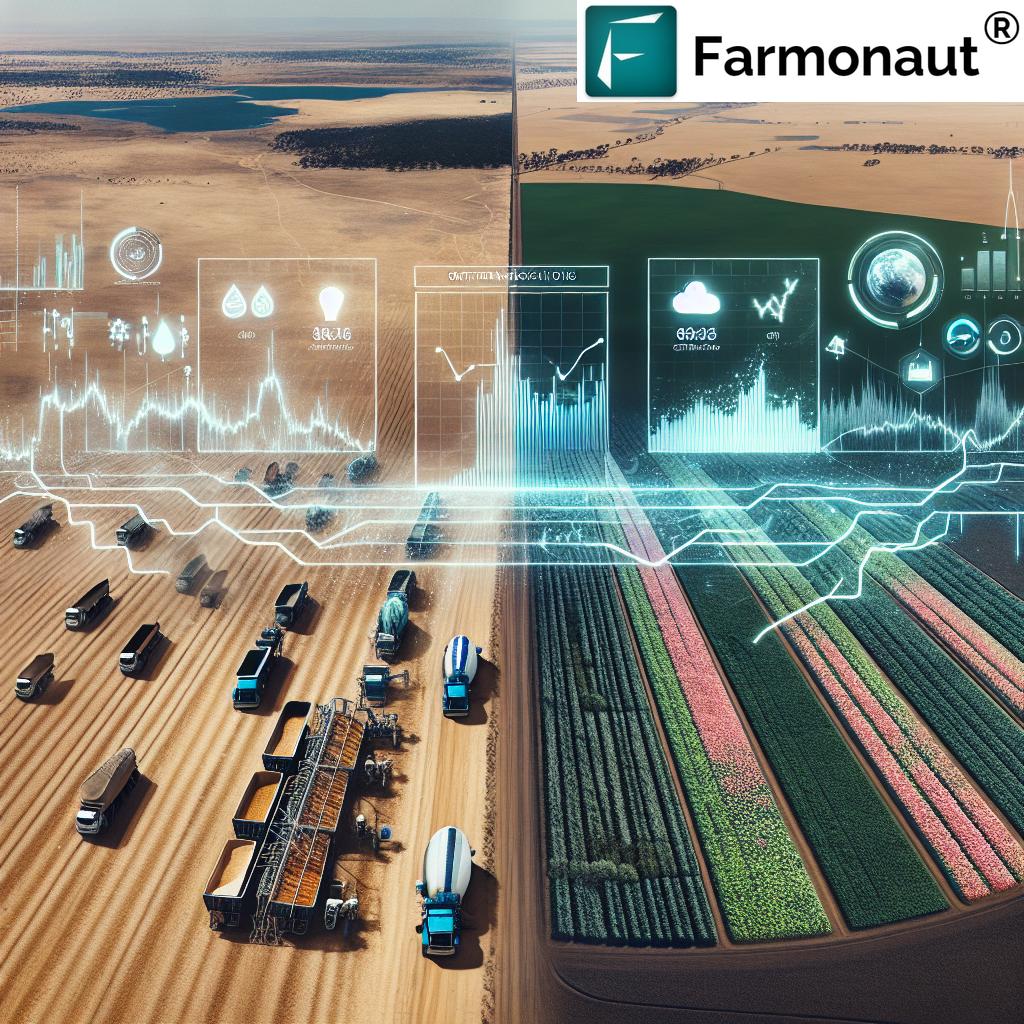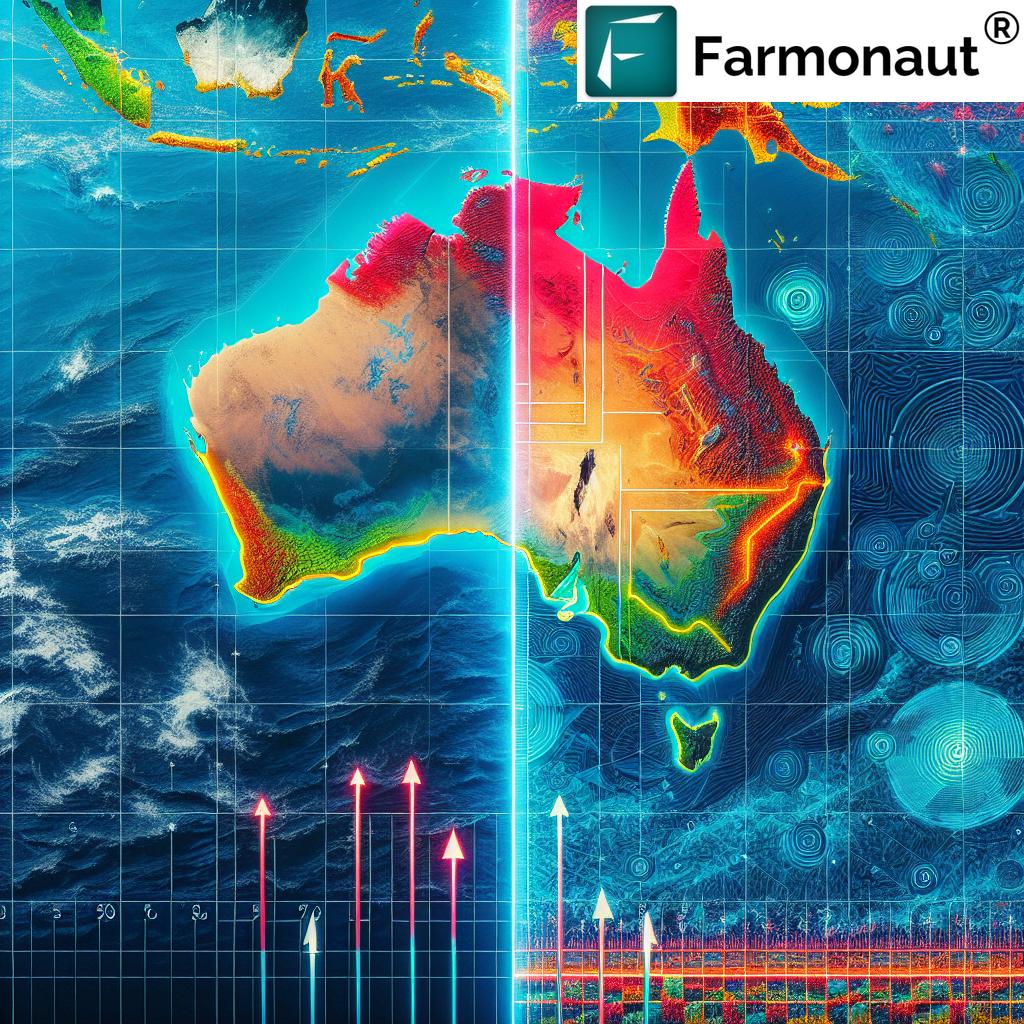Australia Dairy Farming, Outback Plantation & Weather API: Leveraging Advanced APIs for Resilient Plantations in 2025
“Over 70% of Australian dairy farms now use weather APIs for real-time plantation and livestock management.”
Australia Dairy Farming: Landscape, Economy, and Challenges
Australia dairy farming is a vital contributor to the nation’s agricultural economy. The industry is renowned for its premium milk products, robust supply chain, and adaptability despite environmental challenges. In regions like Victoria, New South Wales, Queensland, South Australia, Tasmania, and the expanding australian outback plantation zones, farmers work tirelessly to ensure resilient plantations and maintain high-quality animal welfare.
- The australia dairy farming sector produces over 9 billion litres of milk annually, making it a major player in global agriculture.
- Livestock welfare and plantation health directly influence productivity and the economic sustainability of farming in temperate, marginal, and especially outback zones.
- Australia faces ongoing challenges due to climate variability, erratic rainfall, droughts, and heatwaves—especially in regions bordering or within the australian outback plantation.
- With global change and intensifying climate unpredictability, adopting innovative technologies has become essential to maintain operational success and enhance resilient practices.
The australia dairy farming industry not only supports the nation’s economy but also sustains rural communities, drives export growth, and secures national food supplies.
Climate Variability: How it Shapes Australian Dairy and Plantations
Australia’s climate is among the most unique and variable of all major dairy-producing countries. Regions like Victoria and Tasmania enjoy relatively temperate climates, conducive to high-quality milk production. Conversely, outback and semi-arid zones face ongoing challenges including:
- Extreme temperatures in the australian outback plantation can exceed 40°C in summer and fall below freezing in winter.
- Erratic rainfall patterns—periods of intense rain are interspersed with droughts lasting months or even years.
- Increasing frequency of heatwaves and climate unpredictability, requiring farmers to adapt quickly and efficiently.
- Susceptibility to environmental stressors such as bushfires, floods, and pest invasions.
All these factors intensify the need for timely, granular data from advanced systems like the australia weather api for precision decisions and resource allocation.
Australian Outback Plantation: Adapting to Harsh Environments
The push for expansion and experimentation into the fringes of the australian outback plantation is largely driven by increasing pressure on arable land and demand for dairy products. However, operating in these demanding environments necessitates adapting traditional practices to suit new risks and realities:
- Plantations in the Outback must withstand harsh climatic conditions, characterized by minimal rainfall and fluctuations in temperature and humidity.
- Forage crop and pasture production remain critical for year-round herd feeding and consistent milk yields.
- Water scarcity is a persistent threat, necessitating advanced irrigation management and conservation strategies.
- Heatwaves and droughts regularly disrupt crop growth, leading to volatility in yield and quality.
These challenges make the integration of timely, localized weather data a necessity for australia dairy farming operations, particularly on the edges of marginal lands and the outback.
Australia Weather API: Precision in Data, Precision in Decisions
The adoption of an australia weather API transforms how farmers interact with data, enabling advanced detection, risk mitigation, and maximization of operational productivity for plantation health and animal welfare.
- Real-time meteorological data is gathered from multiple sources (including satellite imagery, radar, and ground-based weather stations).
- APIs provide high-resolution, granular forecasts for temperature, solar radiation, humidity, precipitation, wind patterns, and more.
- Integrated data enables optimized irrigation scheduling, fertilization management, and pest control planning—all vital for crop yield and quality.
How the Australia Weather API Is Transforming Dairy Farming
As we progress into 2025, the australia weather API has become an indispensable tool for australian dairy farmers, particularly in outback plantations.
-
Drought Risk Mitigation: APIs with predictive analytics forecast droughts and dry spells, empowering farmers to take preventive action.
- Implement controlled irrigation schedules
- Select drought-resistant forage varieties
- Adjust stocking rates to reduce overgrazing and protect soil health
- Heat Stress Alerts: Early warnings help activate cooling systems and modify feeding times for dairy herds, minimizing stress and safeguarding milk yield.
- Optimized Field Operations: From fertilization to pest management, timely weather data curtails losses and ensures optimal growth conditions.
- Yield & Quality Improvement: Increased pasture growth and improved animal welfare translate directly to higher productivity and resilient plantations.
Advanced Weather APIs in Outback Plantation Management
A core advantage of integrating advanced weather APIs lies in their ability to provide localized, actionable intelligence to plantation managers and farmers operating in challenging areas:
- Regional and national sources (including satellites, radar, and on-ground stations) feed information into APIs with almost real-time frequency.
- APIs deliver hyperlocal forecasts on rainfall, temperature, wind, humidity, and solar radiation—offering a detailed picture at the micro-region scale.
- Allows precise irrigation, pest, and fertilizer planning based on up-to-date data.
- Delivers agronomic warnings (e.g., approaching frost, heatwaves, or droughts), so farmers can adjust their strategies timely.
Proactive management enabled by APIs is now a key advantage for outback plantation success—directly influencing yield, quality, and sustainability.
“Australian outback plantations using weather APIs see up to 30% less weather-related livestock loss annually.”
Animal Welfare, Heat Stress & Dairy Productivity
Animal welfare is integral to the sustainability and productivity of the australia dairy farming industry. In outback and marginal regions, heat stress is an ever-present risk—especially during climate extremes of 2025 and beyond. Leveraging weather APIs ensures:
- Early warnings for upcoming heatwaves and extreme temperature fluctuations
- Preparedness for herd relocation, activation of shading/cooling systems, and feeding modifications
- Reduction in animal stress, improved milk yield, and consistent product quality
- Better welfare translates into stronger resilience and fewer losses due to weather extremes
Within australian outback plantations, data-driven systems are redefining what’s possible for dairy farmers, combining timely alerts with practical on-ground responses.
Farmonaut: Data-Driven Systems for Weather & Satellite Monitoring
At Farmonaut, we recognize the transformative role of satellite, AI, and weather APIs for australia dairy farming. Harnessing satellite-based technologies, our APIs and digital platforms deliver multispectral imagery, crop and pasture health assessments, real-time weather forecasts, and advanced monitoring of plantation resilience in the Outback.
- Satellite imagery tracks crop vigor, soil moisture, drought stress (NDVI, NDWI), and water management for dairy plantations.
- Jeevn AI advisory system delivers tailored, actionable insights and weather predictions for optimal productivity.
- The Farmonaut Fleet and Resource Management platform enables smart logistics, machinery scheduling, and resource planning for dairy operators with diverse Outback and regional assets.
- Blockchain traceability and environmental tracking (including carbon footprinting) support compliance and sustainable agriculture objectives for Outback and national operations alike.
- Our platform is accessible via web, Android, and iOS apps—enabling farmers to monitor plantations, access data-driven weather forecasts, and implement precision agriculture from any device.
Integrating Farmonaut’s APIs with sophisticated meteorological sources and advanced agricultural practices means that dairy farms in Australia can anticipate risks, optimize resource use, and drive overall productivity.
Comparison Table: Weather API Impact on Dairy Farming (2025)
To illustrate the tangible benefits of embracing australia weather API technology, see our side-by-side comparison. This table contrasts performance indicators between traditional dairy farming practices and data-driven operations aided by advanced weather APIs in the Australian Outback.
| Farming Aspect | Traditional Method (Estimated Values) | With Weather API (Estimated Values) |
|---|---|---|
| Milk Yield per Cow (litres/day) | 17–19 | 20–22 |
| Animal Welfare Score (0–10) | 6.7 | 8.5 |
| Outback Plantation Survival Rate (%) | 68% | 90% |
| Water Usage (litres/ha) | 8700 | 5800 |
| Weather-Related Crop Loss (%) | 18% | 6% |
Data is estimated to reflect broad Australian dairy sector conditions (2025) and may vary by region and specific operation.
Financial Planning & Insurance: Leveraging Weather Data for Security
In 2025, financial institutions and insurance products are increasingly tied to reliable weather data. By leveraging Australia weather APIs, Australian dairy farmers benefit from smarter, faster, and fairer financial products:
- Parametric insurance products use API-verified data to instantly process claims for weather-related losses (such as extreme drought or heatwaves), improving trust and reducing administrative lag.
- Satellite-based verification for crop loans gives farmers better access to funding, backed by objective weather, crop, and yield records.
Tools such as Farmonaut’s crop loan and insurance platform employ satellite imagery and weather-linked data for secure financial support. They fit seamlessly within evolving agricultural finance and risk management strategies.
Farming, Sustainability, and the Future of Australia’s Dairy Industry
Australia dairy farming is undergoing a profound shift towards sustainability, resilience, and technology-driven best practices:
- Environmental impact monitoring, including carbon footprinting, enables farmers to measure, benchmark, and reduce emissions in line with national sustainability goals.
- Blockchain-based traceability ensures product authenticity and boosts consumer trust—especially for premium milk exports.
- Resource optimization (equipment, water, fertilizer) is improved by integrating satellite data and weather APIs, reducing waste while increasing yield.
- Government agencies and research bodies use aggregate API data to steer policy and support industry-wide adaptation in the face of global climate change.
Sustainability is no longer a distant objective; it’s an immediate operational priority for outback plantations and dairy farming nationwide.
Farmonaut Product Solutions & App Integration
For australia dairy farming businesses ready to embrace data and innovative technologies, a full suite of Farmonaut solutions is available to streamline outback plantation management and ensure maximum value from advanced weather API adoption.
- Product Traceability: Make every step of milk supply and plantation harvest visible and verifiable, reducing fraud and enhancing value for local and export markets.
- Large Scale Farm Management: Our modular agro-admin app drives operational control across hundreds or thousands of hectares/farms from a single dashboard.
- Fleet and Resource Management: Track, schedule, and optimize logistics for all types of dairy machinery and outback vehicles.
- Crop Plantation & Forest Advisory: Receive expert advice on region-specific cultivation, weather adaptation, and sustainability, vital for expanding into new Outback areas.
It’s never been easier for australian farmers to plug in weather APIs and remote-sensing solutions into their daily routines and strategic planning. See our developer documentation to get started with API integration.
For flexible, affordable access, explore our Farmonaut subscription options below:
FAQ: Australia Dairy Farming, Outback Plantation & Weather API
What is an Australia weather API?
An australia weather API provides real-time, location-specific weather forecasts and historic climate data, designed for integration into digital platforms used by farmers, plantation managers, and agronomists. It sources information from satellites, radar, and ground-based weather stations.
How do weather APIs improve outback dairy farming?
APIs enable precision decision-making by delivering timely data for irrigation, feeding, fertilizer application, and risk management. This reduces losses, boosts milk and crop yield, and improves animal welfare.
Why is climate monitoring crucial for Australian plantations?
Australian outback plantation areas face harsh conditions—erratic rainfall, frequent droughts, and temperature swings. Monitoring ensures resilient farming practices, protects investment, and maintains sustainability.
How can farmers get started with weather API integration?
Farmers can access tools like Farmonaut’s suite via web, Android, and iOS apps or explore direct API integration using our developer documentation.
Does using weather APIs require advanced IT knowledge?
Not necessarily. Most modern API platforms are user-centric. Farmonaut offers step-by-step guidance, making advanced weather data accessible to both smallholders and large-scale producers alike.
What are the financial benefits of weather API adoption?
Enhanced productivity, lowered water and input costs, reduced weather-related losses, and better insurance and loan assessment. Direct access to parametric weather-linked insurance streamlines the claims process.
Conclusion: Resilient, Data-Driven Dairy Farming for Australia’s Future
The path forward for australia dairy farming and outback plantation success is clear: embrace advanced, localized weather data and innovative technologies to adapt, thrive, and secure returns despite mounting climate unpredictability. The australia weather API—combined with satellite-driven insights and digital platforms—enables farmers to transform traditional agricultural practices, maintain animal welfare, and drive sustainable productivity throughout 2025 and beyond.
At Farmonaut, we are committed to making affordable, scalable weather and satellite-driven solutions available for all in the agriculture sector—including dairy, crop, and plantation operators expanding into Australia’s most challenging zones. Access our web & mobile apps or integrate directly using our weather API for the latest in agricultural intelligence.
Leverage these tools to safeguard your plantations, ensure animal health, optimize resources, and build a sustainable legacy for future generations of australian farmers.












